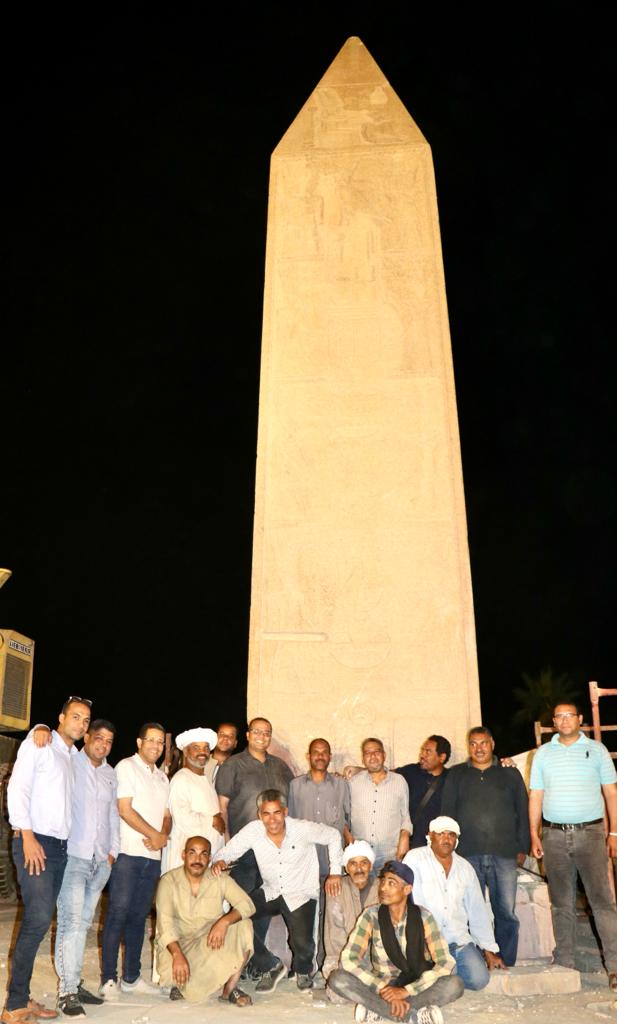CAIRO – 10 April 2022: A team of archaeologists, restorers and engineers from the Supreme Council of Antiquities succeeded in restoring the obelisk of Queen Hatshepsut residing near the Sacred Lake in the Karnak Temples for decades.
Secretary-General of the Supreme Council of Antiquities Mostafa Waziri said that the process of restoring the obelisk came within the framework of the project to develop archaeological sites in Luxor, noting that the studies conducted on the obelisk proved it had to be timely restored and erected again to avoid any possible damages.

Waziri confirmed that the process of restoring and erecting the obelisk took place after the approval of the Permanent Committee of Egyptian Antiquities, in cooperation with the Engineering Authority of the Armed Forces that provided the latest necessary equipment to raise and erect the obelisk.
Carved from pink granite, the obelisk is about 11 meters high and weighs about 90 tons. It is decorated with inscriptions depicting Queen Hatshepsut and her relationship with the deity Amun. The obelisk also displays scenes and names referring to the deity Amun.
It should be noted that this obelisk had fallen in ancient times, perhaps as a result of a devastating earthquake that swept the country. Its remains were left on top of the rubble accumulated above the Wadjet Hall, which was set up by King Thutmose I, father of Queen Hatshepsut.
At the beginning of the 20th century, the French archaeologist Georges Legrain moved the upper part of it and placed it in its current place near the Sacred Lake, to be able to remove the rubble that covered the columns, statues and walls of this part of the temple.
Comments
Leave a Comment